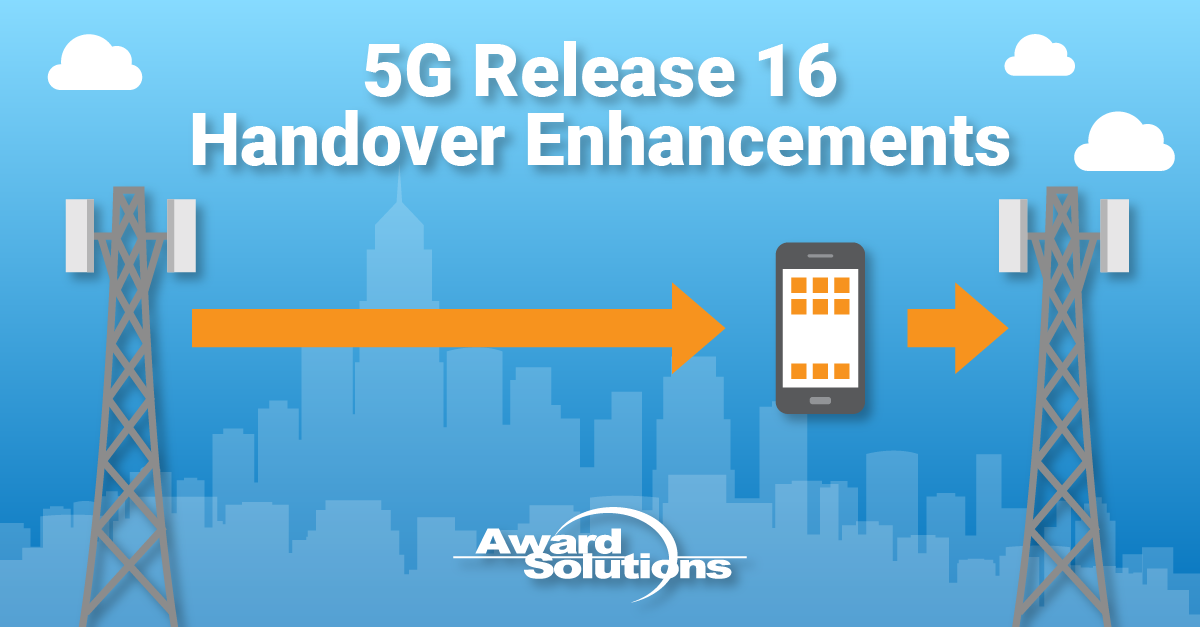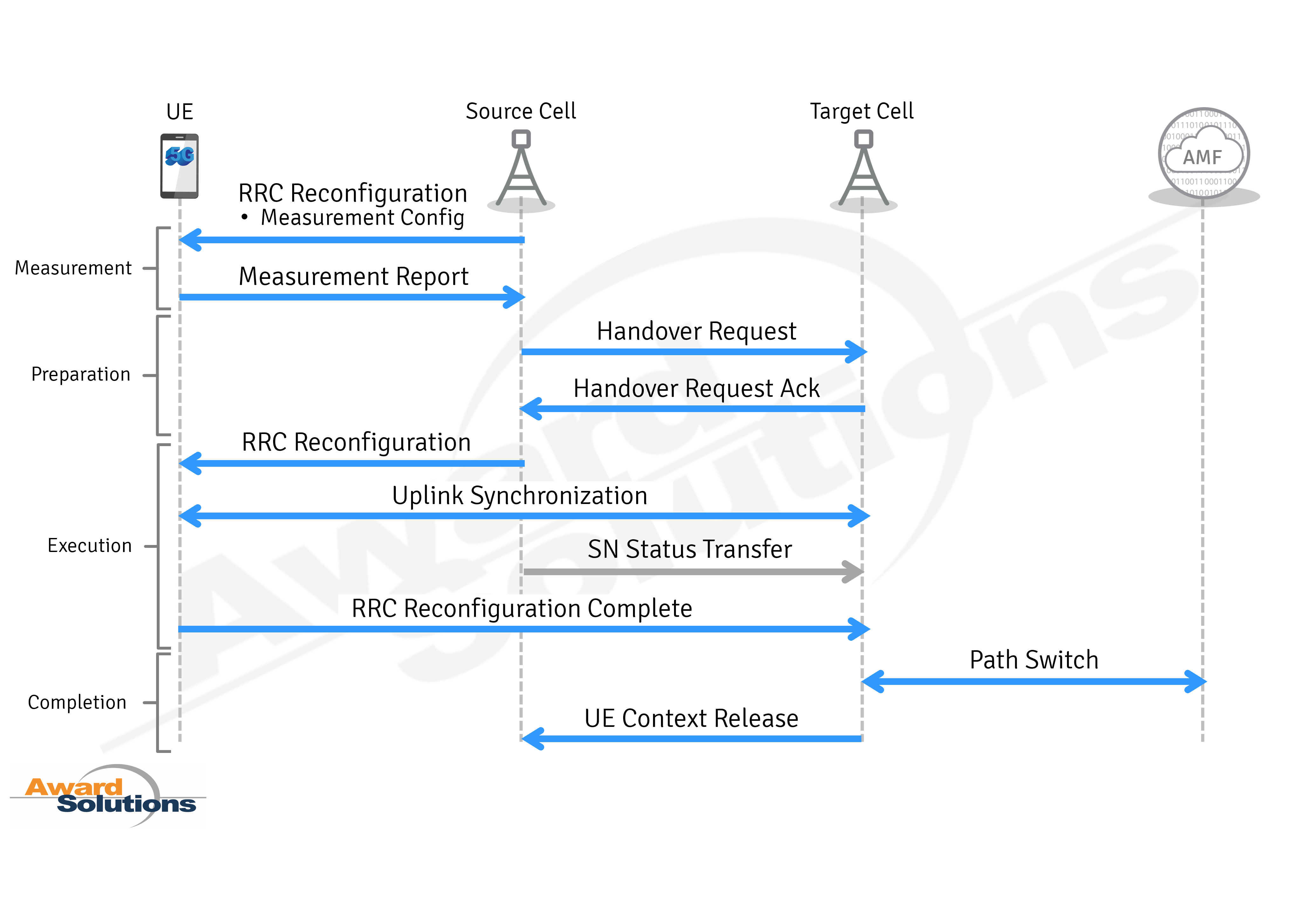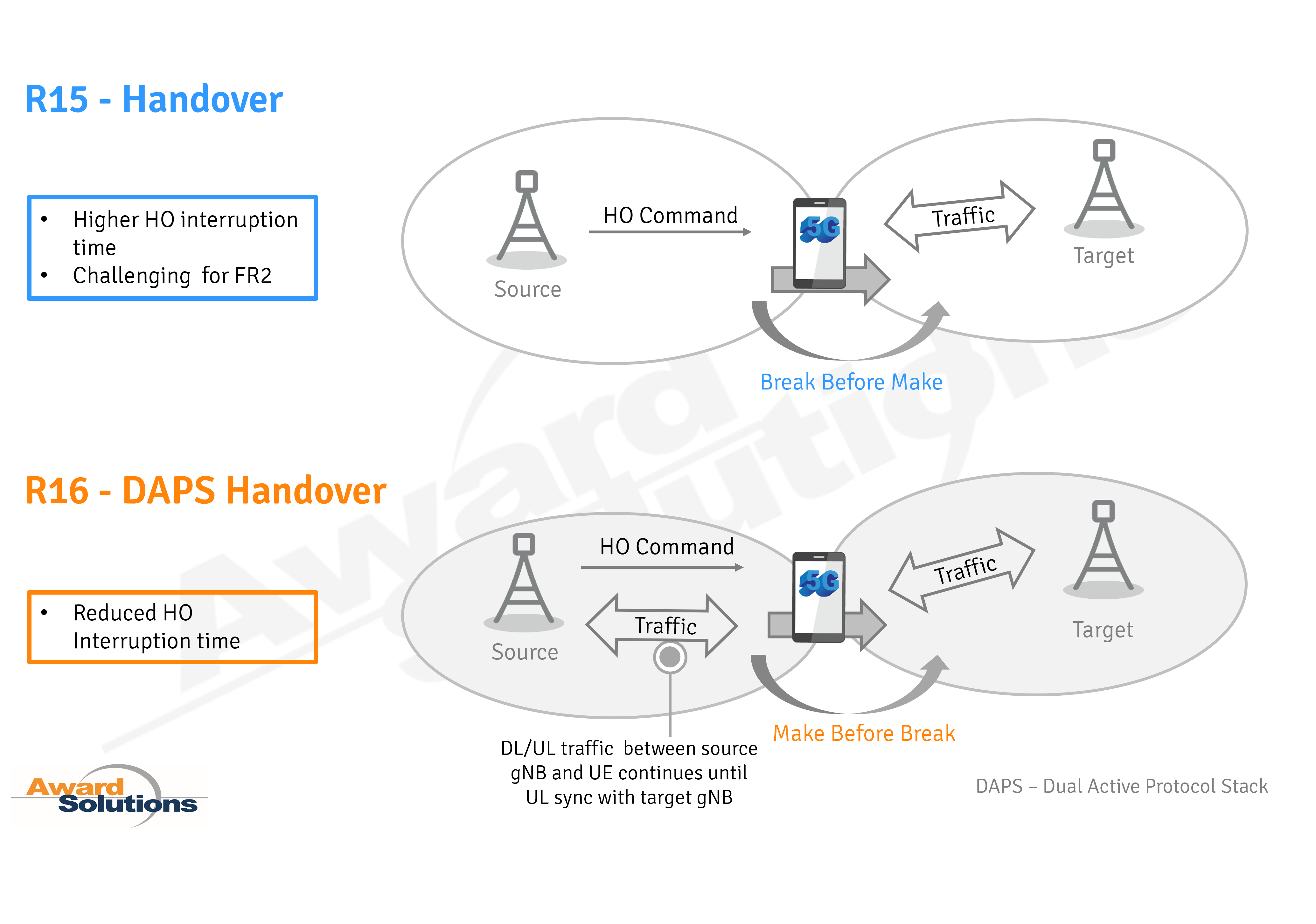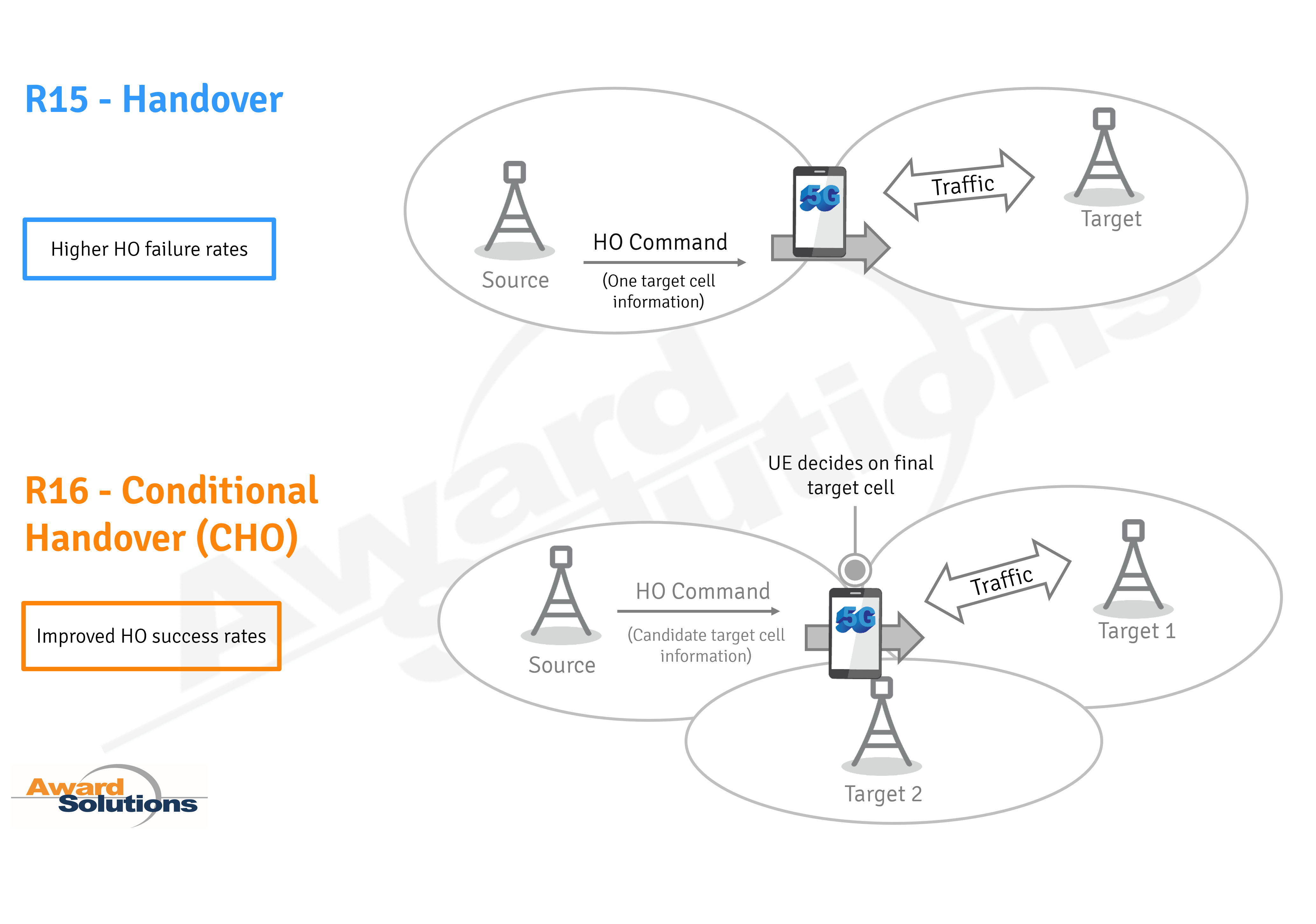
5G Performance Needs and Handover Issues
5G brings significant performance requirements to wireless networks to meet the needs of new use cases and customer experience. Enhanced Mobile Broadband (eMBB) has uplink and downlink throughputs in the range of gigabits per second, and Ultra-Reliable and Low Latency Communications (URLLC) needs air interface latencies below 1 ms. Handover performance can have significant impacts on the ability to meet these needs. Interrupting data flow during a handover or, worse yet, a handover failure dramatically impacts the ability to meet these requirements.
Basic Handover Procedure
The handover procedure happens in stages like prior generations of wireless standards. Once a measurement is received, it can take some time to prepare the target cell for the handover. In addition, during execution, the flow of data is interrupted from the time the mobile is told to move by the source cell to the time the mobile arrives at the target cell.

Break Before Make Handover
Once a mobile reports that another cell is better than the serving cell, the serving (source) cell coordinates resources with the target cell for the mobile. When the mobile is instructed to move to the target cell, data transfer with the mobile ceases, and the source cell begins forwarding data to the target to be buffered. Data transfer resumes only when the mobile completes synchronization with the target cell. This interruption can significantly impact both throughput and air interface latencies.
Rapidly Changing RF Conditions
When a mobile device reports that another cell is better than its current serving cell, RF conditions could change during the time it takes to do handover preparation with a target cell and instruct the mobile to move to the target. In this case, another cell may become a better target cell, and the handover to the previously chosen target cell could fail. Recovery from a handover failure can take some time, during which throughput and latency are severely affected.
5G Release 16 Handover Performance Enhancements
Release 16 of wireless network standards offers new capabilities to handover procedures to address handover issues that can adversely impact throughput and latency. While these capabilities come with some additional costs in terms of signaling and data, they can dramatically improve handover performance.
Make Before Break Handover
Cells operating in millimeter wave (mmW) frequencies in 5G have dense cell deployments due to the frequency’s propagation characteristics. Because of this, we can expect frequent handovers. An interruption period lasting tens of milliseconds may pose challenges for latency-critical applications, and frequent interruptions can impact user throughput.
Release 16 adds a Dual-Active Protocol Stack (DAPS) handover for mmW cells. DAPS is effectively a make-before-break handover that allows the mobile to continue data transfer with the source cell until its connectivity is established with the target cell. Once the mobile can send and receive data with the target cell, the data transfer with the source cell is discontinued. In this way, DAPS handover helps ensure there is little disruption in data transmission during handover, achieving a near-zero-millisecond handover interruption delay.

Conditional Handover
RF conditions can change between when the mobile reports another cell to be better than the serving cell and when the mobile attempts to connect with the serving cell. To overcome this, the gNB can provide the mobile with multiple candidate target cells. This allows the mobile to take additional measurements during handover execution and make a timelier choice regarding which cell it will move to based on the latest RF conditions. Only after the mobile makes these measurements makes its final target cell decision does it discontinue communications with the source cell and begin synchronization with the chosen target cell. In this way, Conditional Handover (CHO) achieves a higher handover success rate, improving throughput and latency performance.

Summary
To help meet the ever-increasing performance requirements for high throughput and low latency in 5G, Release 16 of the wireless standards addresses performance-impacting issues with handovers. DAPS handover for smaller mmW cells allows the mobile to continue data transfer with the source cell until communication is established with the target cell. This helps almost to eliminate the interruption of data transfer during handover. Conditional Handover (CHO) addresses the possibility that RF conditions have changed between handover measurement and execution by allowing the mobile to make a final set of measurements of candidate target cells before discontinuing communication with the source cell. This last check helps reduce the incidence of handover failure in areas where RF conditions could be changing quickly, eliminating the interruption in data transfer during recovery from handover failure.
About Prakash Joshi
Prakash joined Award Solutions in 2010 and has more than 25 years of experience in the wireless telecom industry. As Principal Consultant, he has been a key contributor in developing and delivering courses on 5G Air Interface, 5G Core, 5G Signaling and Operations, Network Slicing, Multi-access Edge Computing (MEC), Private 5G Network, 5G Release 16 Enhancements, LTE-Advanced Pro, LTE, by constantly tracking the standards and their developments.
Prakash holds a master’s degree in Digital Communication Engineering from a leading university in India and has taught graduate and undergraduate courses.
Prakash enjoys gardening, listening to music, and nature tourism in his spare time.
About Award Solutions, Inc.
Award Solutions is the trusted training partner to the world's best networks. We help companies tackle new technologies by equipping their teams with knowledge and skills. Award Solutions invests heavily in technology, research, engineering, and labs to ensure our customers make the most of their resource and network investments.
Award’s expertise extends across many technologies including 5G/LTE Access 5G/4G Core, VoNR/VoLTE, Transport Networks, Telco Cloud, Virtualization and Orchestration, Data Automation, and more.
